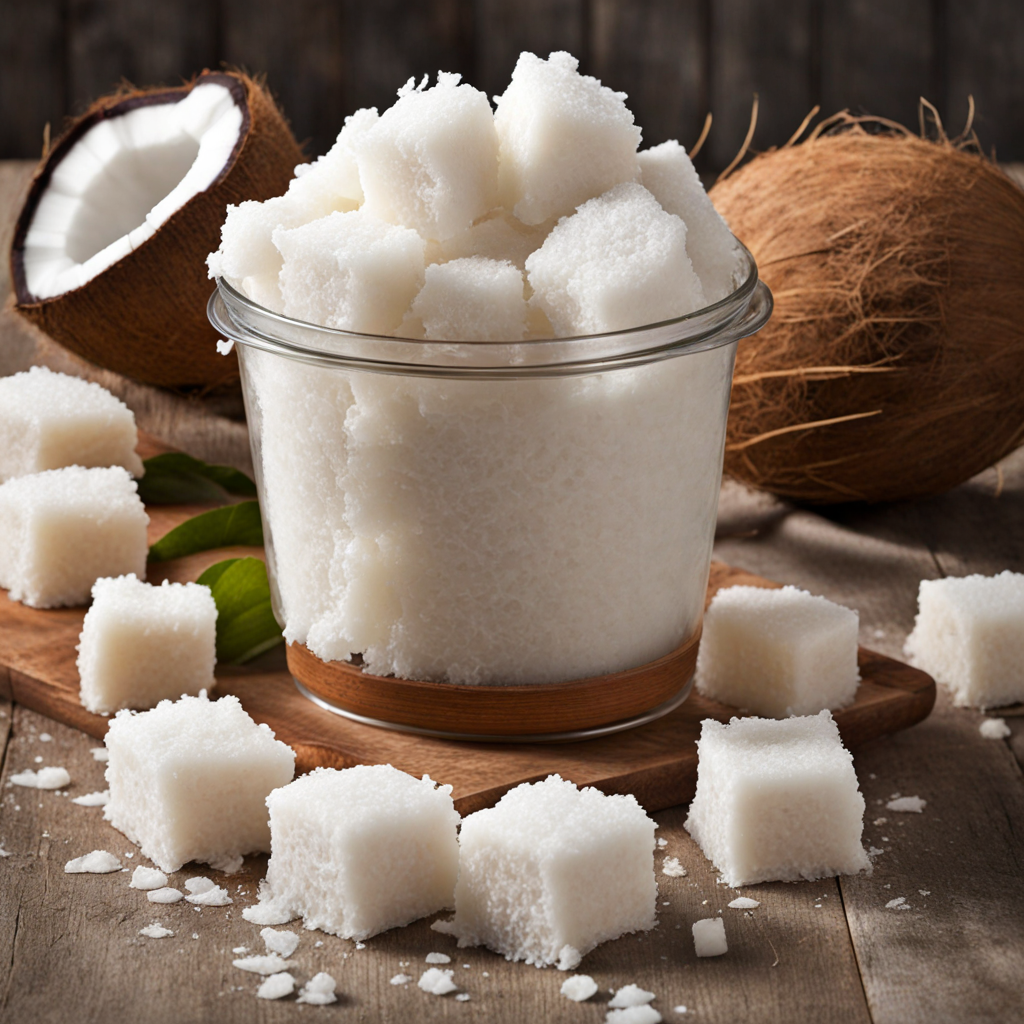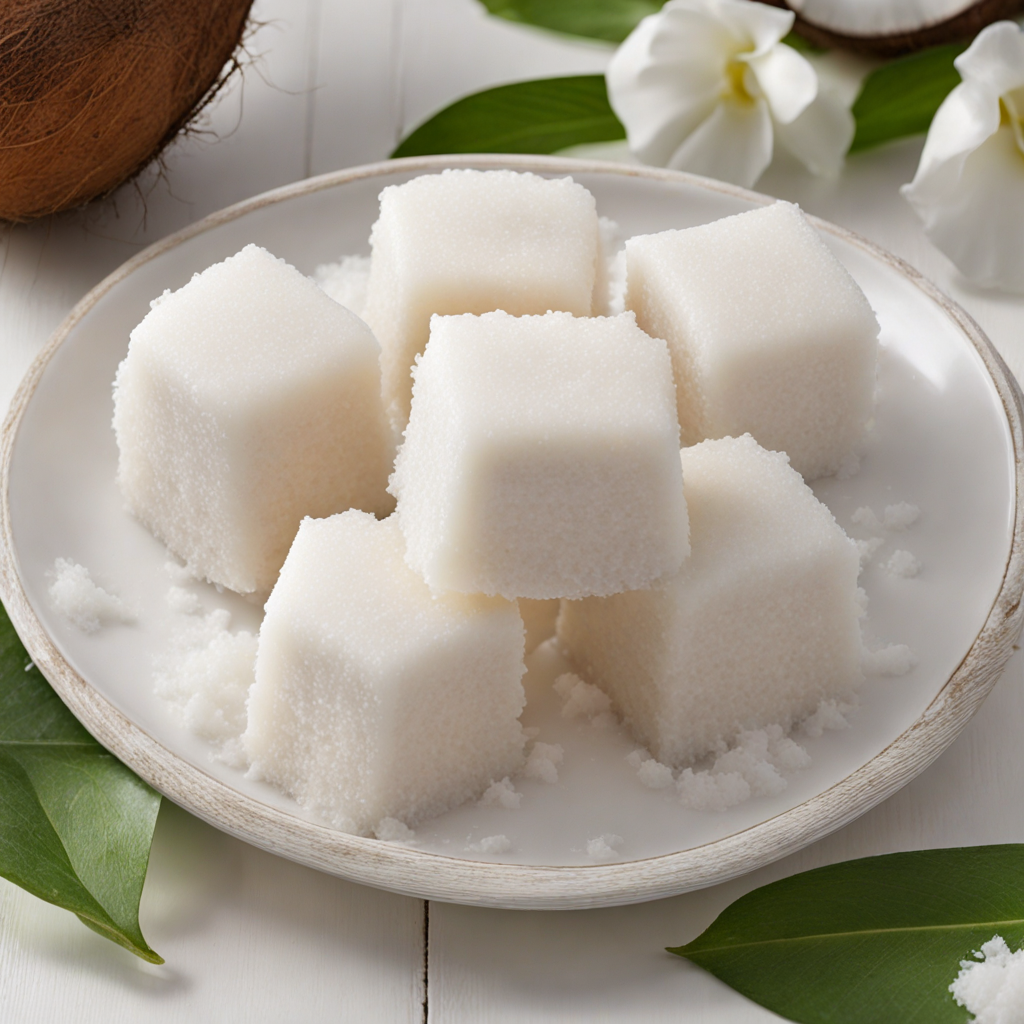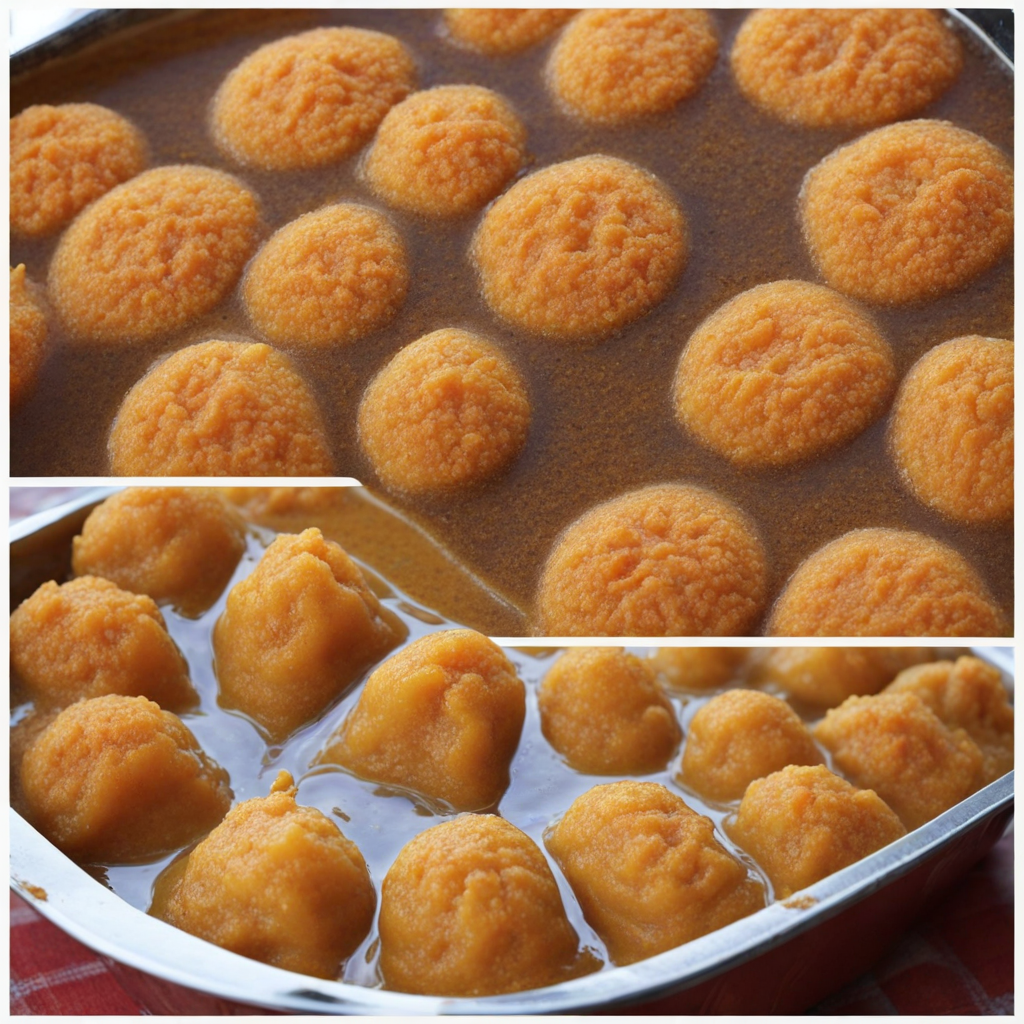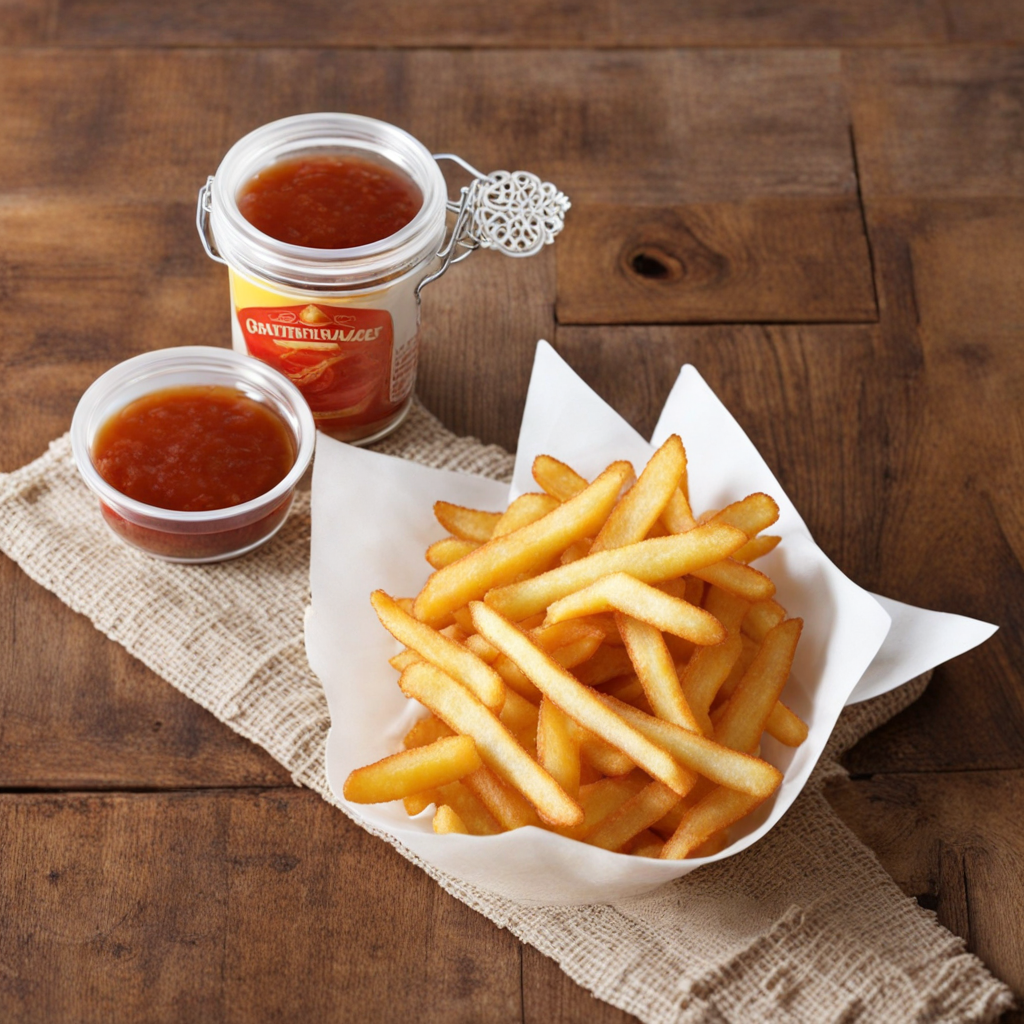Klapperys
Klapperys is a delightful South African dish that brings together the rich flavors of the coastal regions with a unique combination of ingredients. At its core, Klapperys is a coconut-based dessert, often made with freshly grated coconut, sugar, and a hint of vanilla, creating a sweet yet subtly tropical experience. The dish is typically baked until it forms a golden crust, while the inside remains moist and chewy, reminiscent of a cross between a cake and a macaroon. The sweetness of the coconut is balanced by the addition of a pinch of salt, which enhances the overall flavor profile and makes each bite truly irresistible. The preparation of Klapperys often involves a simple blend of shredded coconut, eggs, and sugar, highlighting the natural sweetness of the coconut itself. This simplicity allows the dish to shine, making it a popular choice for festive occasions or as a comforting treat. Some variations may include additional ingredients such as raisins or nuts, adding texture and depth to the dish. The delightful aroma that wafts through the kitchen while Klapperys is baking is enough to entice anyone, promising a deliciously satisfying end result. When served, Klapperys can be enjoyed warm or at room temperature, often paired with a scoop of fresh cream or a drizzle of chocolate sauce to elevate the experience. Its unique blend of flavors makes it a perfect dessert for those looking to explore the vibrant culinary landscape of South Africa. With its chewy texture and sweet, nutty flavor, Klapperys invites you to savor each bite and indulge in the delightful tastes of this beautiful country.
How It Became This Dish
The History of Klapperys: South Africa’s Coconut Delight Origins and Ingredients Klapperys, a beloved South African dessert, is a sweet treat that combines the tropical richness of coconut with a symphony of flavors and textures. The name "Klapperys" derives from the Afrikaans word "klapper," which means coconut, emphasizing the central role this ingredient plays in the dish. While the precise origins of Klapperys are somewhat murky, it is widely believed to have been influenced by a blend of indigenous African culinary traditions and the country's colonial history, particularly its connections with the Dutch and British. Coconuts themselves are not native to South Africa; they were introduced by traders and explorers who traversed the Indian Ocean. The warm coastal regions of South Africa, particularly the Eastern Cape and KwaZulu-Natal, provided ideal conditions for coconut cultivation. As coconuts became more prevalent, they were integrated into various local recipes, leading to the emergence of Klapperys as a distinct dessert. Klapperys is typically made from a combination of desiccated coconut, eggs, sugar, and milk or cream, often flavored with vanilla or lemon zest. The ingredients are mixed together and baked until golden and custardy, creating a dish that is both rich and comforting, with a chewy texture that delights the palate. Cultural Significance Klapperys holds a special place in the hearts of many South Africans, particularly within Afrikaans communities. It is often served at family gatherings, religious celebrations, and festive occasions, showcasing its role as a symbol of togetherness and hospitality. The dessert is frequently paired with tea or coffee, making it a popular choice for afternoon snacks or dessert after a hearty meal. The dish also reflects the broader cultural tapestry of South Africa, where food serves as a means of storytelling and cultural identity. Klapperys, with its Dutch-influenced roots and local adaptations, embodies the fusion of flavors and traditions that characterize South African cuisine. It is a testament to how culinary practices can evolve over time, influenced by various cultural encounters and the availability of local ingredients. Historical Development The evolution of Klapperys is closely linked to the historical context of South Africa. The arrival of European settlers in the 17th century brought new ingredients and culinary techniques to the indigenous populations. The Dutch, in particular, introduced various baked goods and desserts, which would later be adapted by local cooks into uniquely South African versions. As coconut became more widely available, recipes for Klapperys began to circulate, particularly in Afrikaans cookbooks and households. During the 19th and early 20th centuries, as South Africa experienced significant social and economic changes, the dish became a staple in many homes. It was often made for special occasions, showcasing the baking skills of homemakers and the importance of food in social gatherings. Klapperys also reflects the changing dynamics of South African society. As the country transitioned through various political and cultural phases, the dessert remained a beloved choice, adaptable to the tastes and preferences of the time. The post-apartheid era saw a resurgence of interest in traditional foods, with many chefs and home cooks revisiting Klapperys and other classic dishes to celebrate their heritage. In contemporary South Africa, Klapperys has found a place in both traditional and modern culinary contexts. Chefs in upscale restaurants often reinvent the dish, incorporating innovative techniques and local ingredients while still respecting its roots. Meanwhile, it remains a beloved homemade dessert, passed down through generations, embodying the warmth of family traditions. Regional Variations Like many traditional dishes, Klapperys has inspired a variety of regional adaptations. In some coastal areas, local fruits such as pineapple or mango are added to the recipe, bringing a tropical twist to the classic coconut flavor. Others may incorporate nuts or spices, further enhancing its complexity. The dish is also often presented differently depending on the occasion. For family gatherings, it might be baked in a large dish and served in squares, while for more formal events, it can be elegantly plated with garnishes such as fresh fruit or a drizzle of syrup. This versatility demonstrates its ability to adapt to various culinary contexts, making Klapperys a favorite for both everyday enjoyment and special celebrations. Klapperys in the Modern Era In recent years, there has been a renewed interest in Klapperys, both in South Africa and beyond. The global movement towards embracing heritage foods has led many to seek out traditional recipes, and Klapperys has found its way into blogs, cookbooks, and social media platforms. Home cooks and professional chefs alike are sharing their interpretations of this delightful dish, sparking a revival of interest among younger generations. Food festivals and culinary events often feature Klapperys, allowing it to reach a wider audience and introducing new palates to its unique flavor profile. Additionally, the rise of the health-conscious movement has inspired some to experiment with alternative ingredients, such as using coconut flour or natural sweeteners, while still maintaining the essence of the dish. Klapperys serves not only as a delicious dessert but also as a cultural artifact that tells the story of South Africa's diverse culinary heritage. It is a reminder of the importance of food in forging connections, celebrating traditions, and honoring history. Conclusion Klapperys is more than just a sweet treat; it is a reflection of South Africa's rich and diverse culinary landscape. From its humble beginnings to its status as a cherished dessert, Klapperys illustrates the power of food to transcend time and culture. As it continues to evolve and adapt, this coconut delight remains a beloved symbol of family, tradition, and the vibrant tapestry of South African cuisine. Whether enjoyed at a festive gathering or a quiet family meal, Klapperys embodies the spirit of togetherness that is at the heart of South African hospitality.
You may like
Discover local flavors from South Africa







